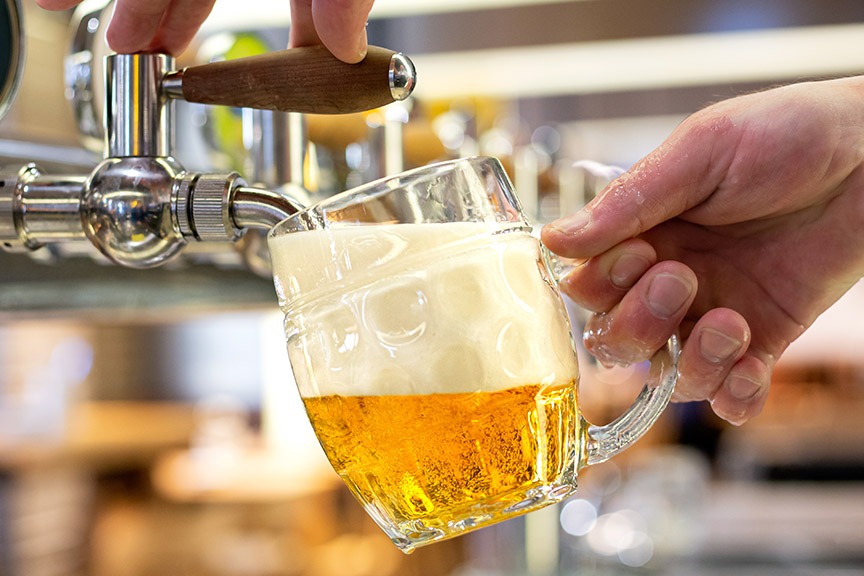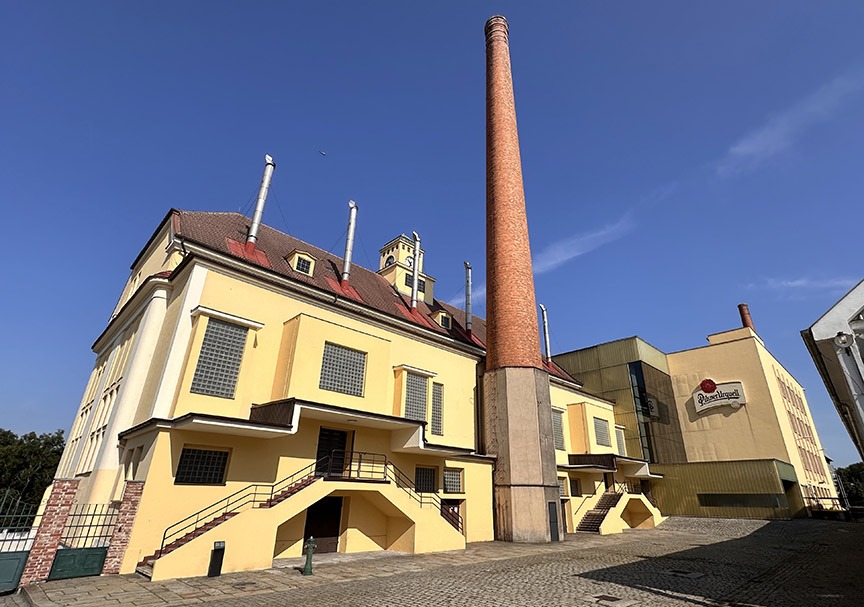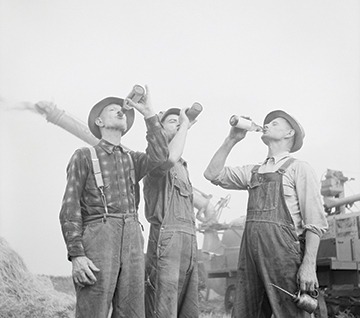Searching for Medieval Ale
Ale, man, ale’s the stuff to drink For fellows whom it hurts to think.
— Alfred Edward Housman (1859-1936)
What was that tender brew that the early Englishman hoisted to his lips in a chipped ceramic cup or horn? Was it smooth and dark with just a touch of bitterness, or was it harsh and unpleasant because of backward brewing methods? It is difficult to say. There are few surviving recipes.
Brewers in the Middle Ages were as evasive about their brewing secrets as we are today. And of course, literacy being rare then, most recipes were simply handed down verbally through the generations.But even Charlemagne (742-814 A.D.) concerned himself with his brewers, instructing the court brewmasters just how he preferred his ale, even brewing his own. This concern for one’s brew preference was a tradition reaching as far back as the Pharaohs of Egypt. Manathos, an Egyptian Greek and high priest of Heliopolis in times before Christ, wrote of Egyptian ale and of how Osiris, god of the underworld, invented it thousands of years before.
In 1256 breweries were built in the kingdom of Bohemia under the direction of King Ottokar II at a town called Budweis. (Sound familiar?) In 1268 King Louis IX of France issued laws concerning brewing: “Beer yeast brought by foreigners shall be inspected by a jury before it is exposed. “No brewer shall keep in, or about, his brew-house any cows, oxen, hogs, geese, ducks, or poultry, as being inconsistent with cleanliness. “A widow may employ servants in brewing, but may not take an apprentice. “Master brewers shall not entice away another’s apprentices nor servants.”
In 1542 the writer Andrew Broode made the distinction between “ale” and “beer,” defining it in his Dyetary; ale is made of water and malt, while beer is made of water, malt, and hops.
As early as the 13th century, hops were used throughout Europe to bitter and help preserve fermented malt beverages, but England seemed reluctant to drop all production of ale, especially the poorer folk of England. It wasn’t until much later in the 18th century that most English brewers produced bitter, hopped beer for which they have since become well known.
The average town in the Middle Ages (a period roughly estimated as 500 to 1500 A.D.) boasted of its own small brewery run by an ale wife or brewster, one of the few opportunities in that era for women to excel in the marketplace. Ale houses were places not only for relaxation and a thirst-quenching libation but for the more important conducting of legal business.
“Alehouse testimony” — an oath made publicly under its roof — was as binding as an oath declared in a court of law. The transferring of chattel (including the disposition of one’s wife or husband) could be made legal if declared under alehouse testimony. As the medieval years progressed, more and more of the brewing business was taken over by the monasteries, where labor was plentiful and the finances of a wealthy patron made it a profitable enterprise for the monks.
After a time most of the large-scale brewing was undertaken by the monasteries, whose monks perfected many brewing innovations. “Church Ale” was the monks’ way to raise money for church buildings. It created a less painful (or at least anaesthetized) way to motivate charity.
Spelt and Mugwort
The taste of the ale was determined by the local ingredients. Unless an adequate substitute for hops was used, most ale of the Middle Ages might have been quite sweet (depending on how much roasting the malt got), and certainly some sweeter ale was consumed. Also, without the preservative effects of hops, quick spoilage was an inevitability, so consumption was great; they drank the ale or beer almost as fast as they made it. Monastery documents record that each monk consumed his portion (an entire jug) at each meal! Ale was a staple of the peasant class, wine being far too expensive with its time-consuming process. Water was certainly the drink of choice for those in the poorest classes. Goat or cows’ milk was a commodity better used for butter and cheese production. Drinking fruit juice was a waste of rare sugars needed to spruce up dull ingredients in other foods, especially as winter wore on. Honey was another sweetener, and mead, or honey wine, was enjoyed on many feast days and celebrations. In England tradition tells us that ale was introduced by the Romans and improved by the invading Saxons. Ale ingredients were varied and plentiful; oats, barley, rye, and spelt or wheat were the stuff of a peasant’s daily life. Flavorings included those herbs that could be found in the countryside or cultivated in the English garden: rosemary, fennel, thyme, rose hips, yarrow, parsley, sage, hyssop, savory, chamomile, purslane, and mint, to name but a few. Spices such as cinnamon, cloves, cubeb, nutmeg, and ginger were also added to spike the flavors and give interest to common fare. To bitter the sweet beer, juniper, mugwort, wormwood, or tansy might be added. When flowers and other leafy herbs or fruits were added to the brew it almost certainly provided necessary yeasts; for yeast, as such, was not an ingredient of itself. The people of the Middle Ages knew that yeast was necessary but didn’t quite understand where it came from. The barm (yeast froth) was scraped off the top of the fermenting beer, saved and used to make bread or promote the next batch of brew.
Ale, the Old-fashioned Way
A simple medieval-type recipe may be approached by an intrepid brewer. Perhaps a friend playing a tune on a reed or banging a tabor in the background might elevate the spirits to the proper mood. Obtain unmalted grain from any local feed supplier, making certain to get whole grain, not rolled. These come in 50-pound bags, providing multiple opportunities to improve the recipe. Soak 15 to 20 pounds of grain for 30 hours in cool, hard water (like the waters of Burton-on-Trent, England, famous for its brewing waters since the 13th century). Drain and change the water every eight hours until grains plump. Strain off the grain and allow it to sprout by laying out grains on mats, stirring often for five days so that the grain won’t rot. (An unpleasant aroma will develop, much like a wet barnyard. Don’t let this alarm you; merely enjoy the “earthy” experience.) Put the grain into clean pillow cases, tied tightly, and dry in the clothes dryer on low heat. When the grain is sufficiently dry, it’s a good idea to roast it. Divide the grain into quarters and roast one part at 225° F for 15 minutes, the next for 30 minutes, the third for 30 minutes at 250° F, and the last part for 30 minutes at 300° F. This roasting method may approximate what could be achieved in a large kiln. How long it is roasted will determine how much sugar and flavor you extract. Experiment. (Two to three pounds of two-row malt can be used to ensure full starch conversion.) Then grind. A mill stone would be best, but a standard grain mill will do. Put the grain in a kettle and add hot water (170° to 180° F) at a ratio of one quart per pound of grain, and steep at 155° F one to two hours. Temperature in the Middle Ages was derived from adding cool water to hot in known quantities with familiar containers, possibly the same containers used for generations. One simply grew accustomed to how many piggins of cool water were added to the boiling vat to know the exact temperature desired. You, however, may use a thermometer. Drain sweet liquid from the grain and rinse the grain with hot water. Each pound of grain should yield 1.5 to 2.5 quarts of liquid. Boil again for 60 to 90 minutes. Add flavorings — herbs and spices — at this time if you desire. Transfer to a wooden barrel and leave to cool to about 65 to 70 °F (18 to 21 °C. The wooden barrels would almost certainly have provided all sorts of yeasts, but to secure fermentation for your batch, add your own brewer’s or bread yeast at this time and leave it to ferment in a cool place where the temperature will not vary greatly. Skim and save the barm (kraeusen that rises to the top of the fermentation) for bread-making for that extra touch for your medieval dinner. Cover with a light cloth. Allow the ale to stand for an extra day or two after fermentation stops to let the yeast flocculate (settle to the bottom of the container). Consume the ale within a few days because it contains no preserving elements other than alcohol. It is best served in a ceramic or wooden mug, silver goblet, prepared horn, or a humpen, the community stone mugs used by early Saxons. Enjoy with a mutton joint or roasted swine along with that bread you baked with the barm. Don’t forget the goat cheese and a well-deserved toast to those brethren of yesterday who toiled daily to brew for king, country, and posterity.







